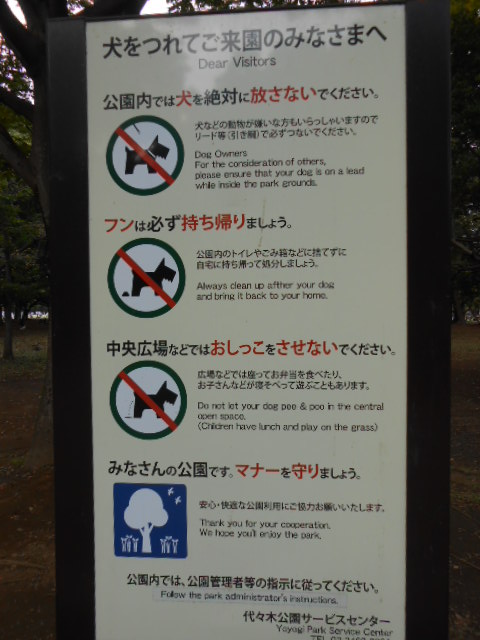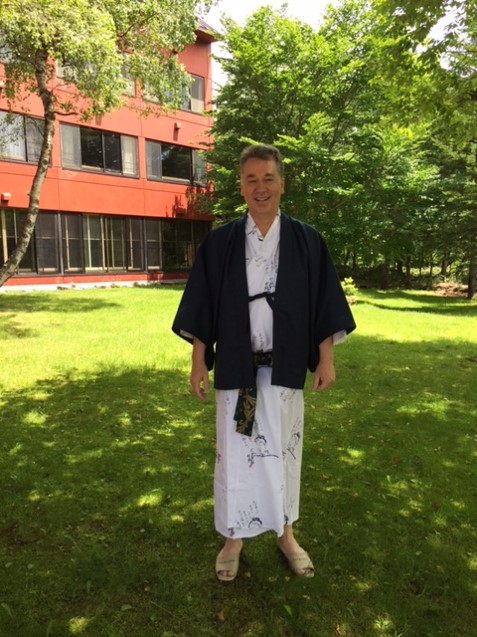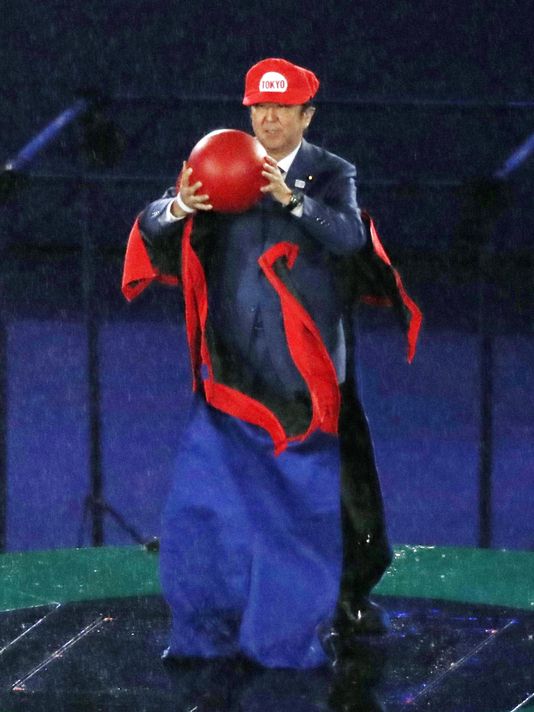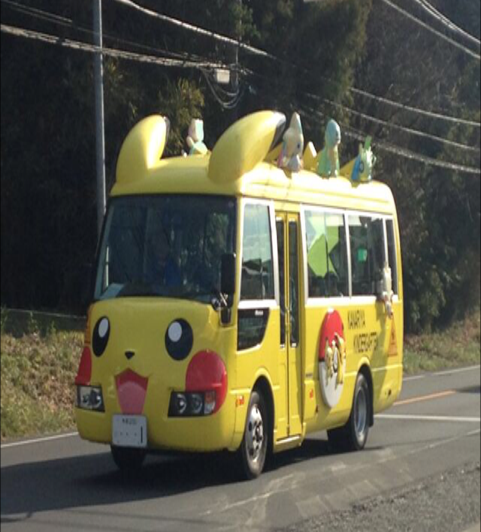The seismic activities and geothermal events that shaped the Japanese islands are still evident today.
This is the center of Kusatsu, in Gunma prefecture, which is known for its hot springs.
Most people are dressed for the onsen (hot springs bath).
Foot wear is very traditional…
Sidewalk vents release the earth’s gas.
This not your traditional town park…
… the babbling brook is hot and steamy.
Along our journey, we stopped to visit Karuizawa and parked at this self-service lot…
… where we found a box for customers to place their money and license plate number (can you imagine any other country in the world with such an honor system).
We spotted this Rolls-Royce. It was a nice day for a top-down drive.
Karuizawa, like many towns in Japan, is known for its unique man-hole covers.
They come in a variety of shapes and colors.
 A fire hydrant is found under here.
A fire hydrant is found under here.
Further along our journey, we visited Nikko….
…which is known for temples and shrines.
Toshogu Shrine was initially built in 1617.
 Nikko is also known for beautiful waterfalls. This was a very nice journey.
Nikko is also known for beautiful waterfalls. This was a very nice journey.
Later in the summer, I ventured to the southwest region of Kyushu.
The first stop was Arita…
… which is famous for porcelain.
Kilns opened in the late 1500’s after the discovery of porcelain clay in the area.
The skills of today’s artisans have been passed down over the centuries.
This piece is priced at $14,000 USD.
Moving down the island to Kumamoto, I was excited to attend the 2nd NPB All-Star game. Note: NPB is Nippon Professional Baseball, and two all-star games are played in two different cities.
There are 12 teams in Japan, equally split between the Pacific League and Central League.
I was fortunate to sit next to Swallows fans.
The outfield “seats” are made of sloping grass, which were filled with potential superstars of tomorrow. 
Swallows power-hitter Balentien hit several balls into the far reaches of left field during the home run competition.
The intimate stadium brought the players very close to the fans.
Every team has a mascot. Here is the Central League line up.
And each team also sent all-star cheerleaders…
…who kept everyone actively engaged throughout the game…
…which also included a watermelon eating contest.
Japanese baseball follows American traditions closely, except for the 7th inning stretch, when everyone blows up balloons…
… and lets them fly. The balloons have noise-makers, which excites the crowd.
Despite all our cheering, the Pacific League was victorious 5 – 1, thus winning both all-star games this year. However, it was a truly memorable experience.
Moving across Kyushu, I arrived at Beppu, which is famous for its hot springs…
…and hot sand.
I was next in line after this group. I was surprised how hot, and heavy the sand was.
After showering, the onsen soak was delightful.
See… don’t I look relaxed?
From there, it was off to lunch.
I selected corn, rice and chicken.
With heavy rubber gloves, the chicken was lowered into the steam pit, followed by the corn and rice on top.
Then the wooden lid was placed on top. Using a timer, the vegetables took 15 minutes and 20 for the chicken.
My lunch was completely cooked with geothermal steam. It was delicious, including the slight sulphur taste.
An hour outside of Beppu brought me to Kurokawa Onsen, where the choices are plentiful.
I selected this onsen (hidden behind the wooden fence).
The forested entrance added to the experience.
After a nice soak, it was onto Mt. Aso, an active volcano which last erupted two years ago in October 2016.
The warning was clear. My visit was brief.
I stayed that evening at a traditional Japanese Inn, with tatami mats.
Please note three features: Toilet slippers (only to be used here), the electronic bidet controls with “front and back” options, and the faucet on top of the water tank (to efficiently wash your hands with water that refills the tank – ingenious!).
The next day started with a visit to this beautiful Shinto Shrine…
…which was followed by a trek to Mt. Kirishima, another active volcano.
 Sitting dormant for 250 years, Mt. Kirishima erupted in April this year (visitor center photo). It was an excellent trip, with many enjoyable experiences. Please see the bonus stories below.
Sitting dormant for 250 years, Mt. Kirishima erupted in April this year (visitor center photo). It was an excellent trip, with many enjoyable experiences. Please see the bonus stories below.
It’s been a difficult summer with multiple natural disasters hitting Japan, including earthquakes, severe flooding, scorching heat, and now the 5th typhoon to hit the mainland (Trami). We are well in Tokyo and are impressed with Japan’s preparedness and resilience.
Our college friend Tim visited in September, which included a visit to a Maid Café…
… followed by the Autumn Grand Sumo Tournament at Tokyo’s Ryogoku Kokugikan.
It was great excitement.
Mongolian yokozuna Hakuho won the Emperor’s Cup with a perfect 15-0 record
After the tournament, we spotted this sumo at the train station (photo by Tim). Enjoy! ts





























































































































































































































































































































































































































































































































































































































































































































































